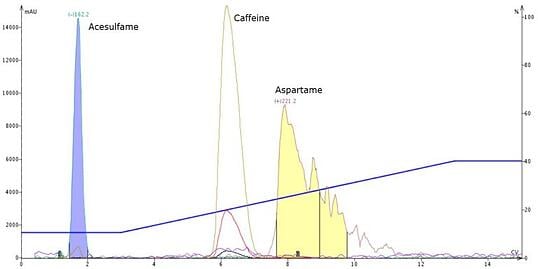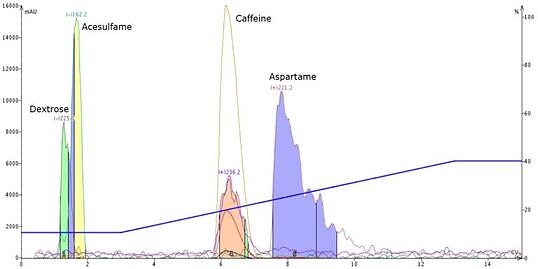Increasingly, organic and medicinal chemistry labs use mass-directed flash chromatography to isolate synthesized compounds. Mass-directed flash chromatography benefits are many, including collecting only the targeted molecule(s) in the reaction mixture. This approach simplifies compound purification since you know what you have made and it's associated mass.
However, there are mass detection nuances that can be challenging. One of these is to know when an acid should be added to the mass detector’s make-up solvent to protonate targeted molecules. In this post, I will provide some insight on this topic.
On its surface, mass-directed flash chromatography appears to be a panacea for the synthetic chemist, and indeed it nearly is. Today’s automated flash purification systems have available in-line mass detection options to facilitate accurate compound purification.
Not all compounds, however, are detectable using a mass spectrometer. To help detect them, mass detectors often have two different ionization sources available, electrospray ionization (ESI) and atmospheric pressure chemical ionization (APCI), which I discussed in a previous post. Typically, ESI is used to detect polar compounds (it is the source of choice for reversed-phase HPLC-MS) while APCI is best suited for organic-soluble compounds and normal-phase flash chromatography.
To minimize sample concentration in the mass detector, the column effluent is split ~1000:1 with the smaller split going to the mass detector (the large split is sent to the UV detector flow cell). Make-up solvent (acetonitrile or methanol) is added to the effluent headed to the mass detector to further reduce the components’ concentration. Note, one always desires to split only a minimal amount of sample to the mass detector since it is known as a "destructive detector" (unlike a UV detector). This means that sample introduced to it will not be reclaimed, which is fine when using mass detection for analysis work, but defeats the purpose for purification.
With APCI, compounds are ionized using a corona discharge needle and heat, no pH modifiers are needed with the make-up solvent. With ESI, though, some compounds require help with ionization so acid (usually 0.1% formic acid) is added to the make-up solvent. The acid protonates solutes headed into the mass detector making some of them easier to detect.
In some recent work I have finished in my lab I have found that with a sample consisting of the artificial sweetener Equal® spiked with caffeine, the dextrose in the sweetener and caffeine need the added protonation while acesulfame and aspartame do not.
Figure 1 shows the sample's chromatography using a water-acetonitrile gradient, ESI mass detector source, and neat acetonitrile as the make-up solvent. In this scenario, neither dextrose nor caffeine is detectable by mass.

Figure 1. Separation of Equal spiked with caffeine using the ESI source and neat acetonitrile as the make-up solvent. The mass detector only saw acesulfame, which is ionic, and aspartame. Caffeine is detected only by UV and dextrose is not detectable by either mass or UV.
When formic acid is added to the acetonitrile make-up solvent (0.1%), both dextrose and caffeine are protonated and are easily seen by the mass detector, Figure 2.

Figure 2. Caffeine-spiked Equal separation using acidified acetonitrile as the make-up solvent. The acid protonates both dextrose and caffeine allowing them to be detected and fractionated.
So, what does this tell us? To me it says to evaluate your sample's detectability prior to chromatography to determine if an acid modifier is needed. Charged compounds, in this sample acesulfame, as its potassium salt, and aspartame do not require any help ionizing in solution.
What has been your experience with make-up solvent pH modification?
For more tips and tricks regarding flash chromatography, download our whitepaper - Inspiring Productivity with Modern Flash Chromatography.

 Organic Workflow
Organic Workflow Peptide Workflow
Peptide Workflow Scale-Up Flash Purification
Scale-Up Flash Purification  Sample Preparation
Sample Preparation Biomolecule Purification
Biomolecule Purification Oligo synthesis
Oligo synthesis Scavengers and Reagents
Scavengers and Reagents Service & Support
Service & Support Accessories & Spare parts
Accessories & Spare parts Investors
Investors Reports & News
Reports & News The Share
The Share Corporate Governance
Corporate Governance Calendar
Calendar Sustainability
Sustainability Our Offering
Our Offering Our History
Our History Our Locations
Our Locations Leadership
Leadership